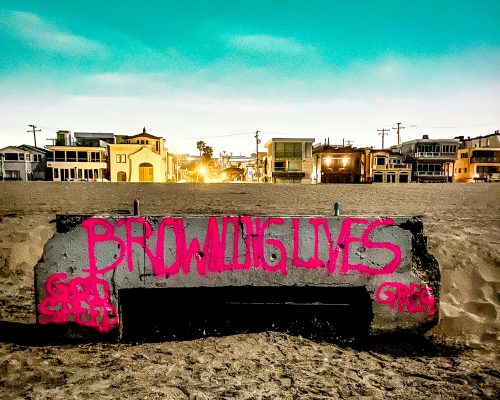
By Ryan McDonald
With multiple projects set for the downtown area, hotels dominated the discussion of Hermosa Beach development in 2015.
Proponents and developers touted hotels as financial boons and land-use solutions. Voters passed Measure H in the November election, which boosted the city’s transient occupancy tax on hotel beds from 10 percent to 12 percent. Unlike other revenue sources, money collected from the tax would go directly to the city’s general fund. And several city council candidates also spoke about how the new buildings could revolutionize downtown, adding more daytime foot traffic and diminishing the dominance of late-night establishments in the area.
But concerns about their size and impact continue to surround the developments. In particular, residents have questioned whether projections have adequately captured the impact of multiple projects going up simultaneously.
As the year closed, a number of projects were in varying states of progress. H20 Hermosa recently obtained City Council approval — for a second time — and is preparing to seek building permits. Strand & Pier made significant revisions to the project over the summer, and released its plans to the public in December.
A third project, on an 11th Street location currently occupied by Brothers Burritos, was announced toward the end of 2014, and little has been revealed since. OTO, the developer behind the project, indicated that they were in talks to purchase the property from the heirs of Peter Mangurian. But records from the Los Angeles County Assessor’s Office indicate that the property has not changed hands since the heirs acquired it after Mangurian died in 2006.
Clashing perspectives

H20 Hermosa saw its share of setbacks this year, but the boutique hotel remains the closest to reality. Formerly known as the Clash, H2O Hermosa will be a 30-room hotel of roughly 30,000 square feet at 1429 Hermosa Avenue. There are no plans for a bar or restaurant, but the rooms will be equipped with minibars.
The City Council originally okayed the project in July 2013. But a series of setbacks prevented developer Raju Chhabria from obtaining a building permit until after his entitlement from the city had expired, forcing him to return to the Planning Commission and the City Council. (Chhabria also got the approval of the California Coastal Commission, which remains valid so long as construction begins before May 2016.)
Luis de Moraes, founder of the Envirotechno design firm and the lead architect on the project, attributed the expiration to overlapping delays from the coastal commission and the city’s Planning Department.
The second go-round before went relatively smoothly, given the fact that Chhabria made few changes to the project from when it was originally approved. According to city staff, the alterations, which included adding a breakfast area for guests and moving the hotel’s bicycle racks, were so minor that the project did not substantially differ from the one that council had already approved.
Some residents raised concerns, however, that the traffic study prepared in connection with the previously approved project was no longer valid. Sheryl Main said that, given the fact that other hotels are proposed for the area, a new traffic study should be done incorporating cumulative impacts.
But Community Development Director Ken Robertson said that the study prepared in 2013 included other planned developments, including the Strand and Pier project, as well as ambient growth. The development picture, Robertson said, has not changed so much that a new traffic study would be required.
Complementing concerns over traffic are worries about how the new project will impact parking. City code requires one parking space per room for hotels. Due to the high water table in the area, the hotel was unable to build an underground parking garage, so the hotel’s first floor is almost entirely devoted to parking. Final renderings for the plan showed 37 parking spots. The spots will be in a “tandem” parking system on the ground level, with a 24-hour valet operation to move the cars when needed.
Questions about whether H2O’s parking was sufficient became a broader debate about how people will travel in the future. Mayor Carolyn Petty said that the community’s habit of consistently using parking as a reason to oppose a project was illogical, and that it was unrealistic to think that every guest would drive to the hotel given the increasing popularity of ride-sharing services like Uber.
“This concept that everything has to revolve around parking is anachronistic,” Petty said.
As Chhabria prepares for construction, questions remain about the block of properties immediately to the South, between 15th Court and 14th Street, which the developer also recently acquired. Chhabria said he is not yet sure what will become of them, but promised that he would take community input into account before deciding.
Strand and Pier

The Strand and Pier development, named for intersecting paths where developers hope it will eventually sit, is projected to be considerably larger than H20 Hermosa. The company initially submitted the project in 2014, then revised its submission this summer in response to public outcry. The revised plans have only become available in the last few weeks and are still not available online. This, combined the fact that the first public meeting to discuss the revised plans will take place in 2016, has limited public reaction to the changes. But the revisions suggest that developer Bolour Associates was paying attention to what occurred with Chhabria’s smaller project.
Initial projections called for as many as 118 hotel rooms. More controversially, the project would have reached as high as 45 feet, well in excess of the 30-foot maximum that Hermosa enacted in 1991.
A series of community outreach meetings last year convinced the company to modify their plans. Developer Bolour Associates reduced the number of rooms to 100, and the height of the building now will not exceed 30 feet. (Although the hotel will come within the height limit, it will feature a number of rooftop amenities, including a deck for events and a garden to produce some of the food at the hotel’s restaurant.)
The development will also be squeezed from the side. Although city regulations do not require setbacks on Pier Plaza, the latest plans reveal a setback of at least six feet and up to 13 from the pedestrian way.
Additionally, the new plans do away with guest rooms on the ground floor, and call for leaving the area open to the public. The most recent plans indicate the ground floor will include a 8,213-square-foot restaurant, and 5,406 feet of retail space. It will also include a spa, fitness facility and a ballroom.
Also in line with the concerns about parking that earlier projects generated, the updated Strand & Pier project enhanced parking. An on-site underground lot will contribute 178 parking spaces, as well as 180 bike rack spots.
Despite the modifications, Strand & Pier remains a project with a significant footprint. And this more than anything is what provoked residents’ concern when plans were initially released.
“You have decided to bring an urban hotel to a small town,” resident Ray Dussault said at a meeting when plans were first unveiled. “I think you need to start thinking about bringing a small hotel to a small town.”
Unlike H2O Hermosa, the project is large enough to require an Environmental Impact Report under California law. This lengthy process will provide further opportunity for residents to see the issues, and benefits, to come with the development.








